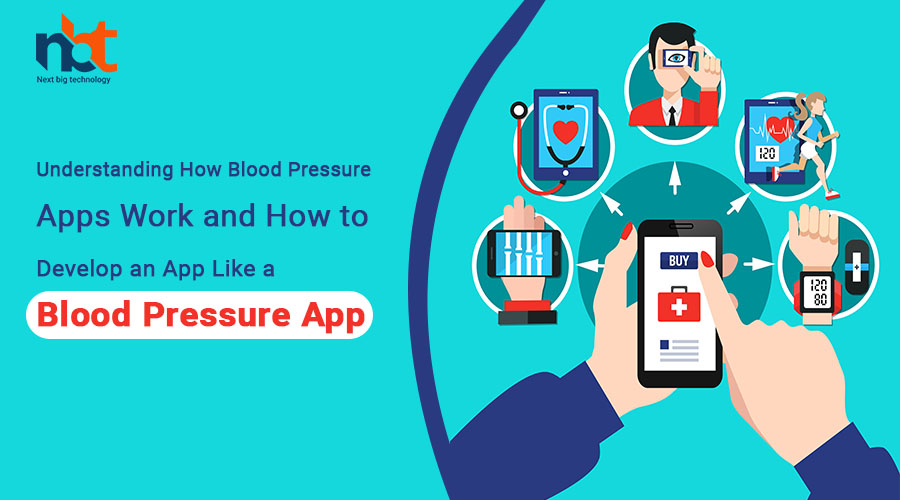Table of Contents
Introduction:
As cardiovascular health continues to be a priority for many individuals, the importance of monitoring and managing blood pressure has become increasingly evident. With the advancements in technology and the widespread use of smartphones, blood pressure apps have emerged as valuable tools for monitoring and tracking this vital health metric. In this article, we will delve into how blood pressure apps work and provide insights into developing an app similar to a blood pressure app.
How Blood Pressure Apps Work
The Role of Blood Pressure Apps:
Blood pressure apps are designed to help individuals monitor and manage their blood pressure levels conveniently. They leverage the power of mobile devices to provide users with a convenient way to measure, record, and track their blood pressure readings over time. By empowering users with information and insights, these apps aim to promote proactive health management and facilitate communication with healthcare professionals.
Measurement Methods:
Blood pressure apps typically offer two measurement methods: manual entry and smart devices integration. The manual entry method requires users to manually input their blood pressure readings obtained from a traditional blood pressure monitor. On the other hand, smart device integration enables the app to connect with compatible wireless blood pressure monitors or wearable devices, automatically syncing and recording the readings.
User-friendly Interfaces:
An essential aspect of a blood pressure app is its user-friendly interface. The app should provide an intuitive design, making it easy for users to navigate and record their blood pressure readings accurately. Clear instructions and visual aids, such as diagrams or animations, can help users correctly position the cuff for measurement.
Data Recording and Tracking:
Blood pressure apps enable users to record their blood pressure readings conveniently. The app stores this data securely, allowing users to access their historical readings and track changes over time. Graphical representations and trends can provide users with valuable insights into their blood pressure patterns, helping them identify potential risks or improvements.
Customization and Personalization:
To cater to individual needs, blood pressure apps often provide customization features. Users can set reminders for regular measurements, input additional health-related data like medications or lifestyle factors, and even add notes or comments for each measurement. Personalization options ensure that the app adapts to the unique requirements of each user.
Data Analysis and Insights:
Blood pressure apps can analyze recorded data and provide users with informative insights. They may generate reports, highlight abnormal readings, detect patterns, or offer suggestions for lifestyle modifications. Some advanced apps may even leverage machine learning algorithms to provide personalized recommendations based on the user’s data and health profile.
Integration with Healthcare Professionals:
Many blood pressure apps allow users to share their data with healthcare professionals. This feature can facilitate remote monitoring, enable telehealth consultations, or assist in the management of chronic conditions. Seamless integration with electronic health records (EHR) systems ensures secure and efficient communication between the app and healthcare providers.
Developing an App Like a Blood Pressure App:
If you aspire to develop an app similar to a blood pressure app, here are some crucial steps to consider:
a. Define Your App’s Objectives:
Determine the specific goals and features of your app. Assess the unique value proposition you want to offer to users, such as advanced data analysis, medication tracking, or integration with other health monitoring devices.
b. Compliance with Medical Standards:
Familiarize yourself with medical standards and regulations related to blood pressure monitoring apps, such as FDA guidelines. Ensure that your app adheres to the necessary requirements for accuracy, privacy, and security.
c. Collaborate with Healthcare Professionals:
Establish partnerships with healthcare providers, physicians, or medical institutions. Seek their expertise to ensure your app aligns with clinical practices and caters to the needs of healthcare professionals.
d. User Interface and Experience:
Focus on creating an intuitive and visually appealing interface. Prioritize ease of use, clear instructions, and seamless navigation to enhance user engagement.
e. Integration with Devices and Wearables:
Explore opportunities to integrate your app with compatible blood pressure monitors, wearable devices, or other health tracking tools. This integration streamlines the data collection process for users.
f. Data Security and Privacy:
Implement robust security measures to protect user data and comply with relevant privacy regulations, such as HIPAA or GDPR. Encryption, secure data storage, and user consent mechanisms are essential components.
g. Testing and Feedback:
Conduct extensive testing to ensure the accuracy, reliability, and performance of your app. Seek user feedback throughout the development process to address any issues or areas for improvement.
Conclusion:
Blood pressure apps play a significant role in empowering individuals to actively monitor and manage their cardiovascular health. By understanding the key functionalities of these apps and considering essential factors during the development process, you can create a valuable tool that promotes proactive blood pressure management. Remember to prioritize accuracy, user experience, data security, and collaboration with healthcare professionals to develop a successful blood pressure app.
Thanks for reading our post “Understanding How Blood Pressure Apps Work and How to Develop an App Like a Blood Pressure App”. Please connect with us for blood pressure app development.










